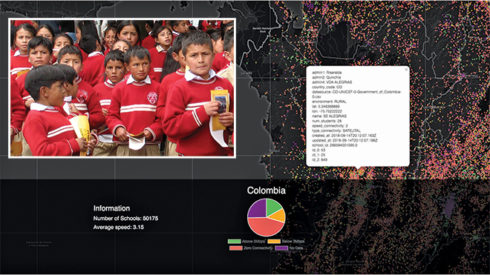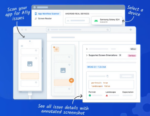
While it may seem like most of the world is going through a digital transformation, there are still many people without basic access to the Internet. The International Telecommunication Union found about 3.7 billion people remain unconnected. Additionally, 29 percent of 18 to 24 year olds (mostly in Sub-Saharan Africa) do not have access to digital products and services, limiting them from the same information, opportunity or choice as their connected peers.
“Internet access is still an unaffordable luxury for many. For others, service is inadequate or unreliable, and not worth the trouble or expense of connecting. Online abuse, violations of privacy, government surveillance, and other issues provide further challenges, keeping many offline,” Eleanor Sarponh, Alliance for Affordable Internet deputy director and policy lead, wrote in a post.
In an effort to close this gap, the United Nations Children’s Fund (UNICEF) created Project Connect, an initiative to not only bring connectivity to every school, but evaluate schools’ ability to reach out about education, health and emergencies. In order to make this possible, the organization teamed up with Red Hat on a co-creation effort.
“Co-creation is simply multiple organizations working together to tackle a big issue or effort. You’re leveraging a wide range of perspectives and diverse skill sets to work toward one goal. In the beginning, there might be some storming in the teams — we’re feeling each other out. How do the teams work best together? What kind of creative solutions can we develop together? After a while, the teams become one,” said Nick Hopman, vice president of global professional services, practices, solutions and offerings at Red Hat.
Going into the project, UNICEF needed to understand what schools were connected, what schools had access to digital tools, and where were the gaps. This meant dealing with a number of different data sources and looking at other factors such as natural disasters, conflict, poverty and other vulnerabilities, according to Chris Fabian, co-founder of UNICEF’s Innovation Unit
To get Project Connect started, UNICEF participated in Red Hat’s eight-week Open Innovation Labs residency program. Out of the program, UNICEF was able to quickly create a prototype that showed the value of the project. Fabian explained the program provided access to people, processes and open-source tools that helped UNICEF speed up its pace of innovation.
“Red Hat knows that there is no such thing as ‘one size fits all.’ We liked their open-source model — it democratizes access to technology which is something that tied into our mission perfectly,” said Fabian.
In addition, the Red Hat program improved the infrastructure of the platform, allowing it to scale to different countries as well as create mechanisms for new partners and contributors to get involved.
With the prototype, UNICEF started working with the Colombian Ministry of Education and Desk of Education in Emergencies to build tools that could help them prepare and respond better to emergencies as well as work to connect disconnected school.
Today, the project has mapped more than 500,000 schools in 10 countries, and has connectivity data for more than 120,000 schools in five countries, Fabian explained. There is also interest from a number of different governments looking to use the tool to provide connectivity, understanding school’s risks and creating information about education. UNICEF also worked with Red Hat on Magic Box, a collaborative data sharing platform that provides critical insights into vulnerability populations.
“With a real-time map of every school’s Internet connectivity, we will know how to best target help. This is the goal of Project Connect. We want to help identify where the gaps are, understand the level of connectivity that exists at each school, and do our best to channel partners and resources to help. We believe this information will ultimately help national governments optimize their education systems,” Project Connect’s website stated.
Fabian does not believe these projects would have been possible without the co-creation effort with Red Hat.
“We really discover that through Open Innovation Labs, we find this beautiful co-creative synergy between both companies. In this case, that led to developing tech that can track school connectivity or map disease outbreaks,” Hopman added.






